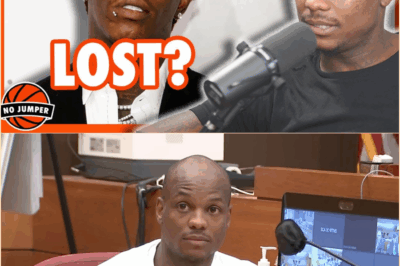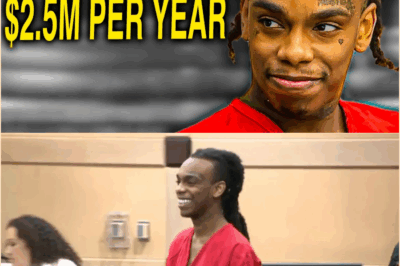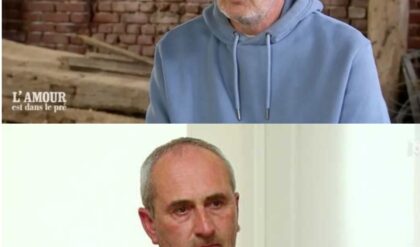In the ruthless, high-stakes world of 90s West Coast hip-hop, Eric “Eazy-E” Wright was a king. As the visionary founder of N.W.A. and Ruthless Records, he had built an empire on the back of a sound that was raw, unapologetic, and world-changing. He was the “Godfather of Gangsta Rap,” a larger-than-life figure who seemed untouchable. Then, in the blink of an eye, he was gone. On March 26, 1995, at the age of just 30, Eazy-E was pronounced dead. The official cause was AIDS-induced pneumonia. But for many, that simple explanation felt like a lie, a cover for a story far more sinister, one involving bitter rivalries, betrayal, and perhaps, the perfect murder.

The end began with a cough. In late February 1995, Eazy-E, believing he was suffering from a severe case of asthma, checked himself into Cedars-Sinai Medical Center in Los Angeles. The reality was a horror story. On February 24, he was diagnosed with Acquired Immunodeficiency Syndrome (AIDS). The news sent a shockwave through the music industry and his fanbase. This was an era when AIDS was still heavily stigmatized, misunderstood, and seen as a death sentence. Yet, what was most baffling was the speed of his decline. HIV, the virus that causes AIDS, typically takes years to destroy the immune system. Eazy-E, however, went from a public appearance to life support in a matter of weeks.
On March 16, from his hospital bed, he released a statement to the world, a brave and shocking confession. He admitted his diagnosis, attributing it to his promiscuous lifestyle, and urged his fans to learn from his mistakes. “I’m not saying this because I’m looking for a soft cushion to land on or because I’m scared,” his statement read. “I just feel that I’ve got thousands and thousands of young fans that have to learn about what’s real when it comes to AIDS.” Ten days later, he was dead. The official narrative was sealed: a tragic but straightforward case of a man succumbing to a devastating illness.
But even before he was laid to rest, the cracks in that narrative began to show. The first and most glaring issue was the timeline. How could a man who appeared healthy just a month prior be so utterly ravaged by the disease? This question became the fertile ground from which countless conspiracy theories would grow. Then came the strange and unsettling events of his final days. Twelve days before his death, while reportedly in and out of consciousness, Eazy-E married his girlfriend, Tomica Woods. With that hospital-room ceremony, Woods became the sole heir to his estate and the new head of Ruthless Records, a company worth millions.
This sudden transfer of power was immediately contested by many close to the rapper, including his own family and the other members of N.W.A., who claimed they were barred from seeing him in his final weeks. His will was hastily rewritten, and his children from other relationships were left fighting for their inheritance. It felt less like a tragic ending and more like a corporate takeover staged around a dying man. This chaotic and suspicious atmosphere set the stage for a darker theory to take hold, one that pointed not to a virus, but to a rival.

Enter Marion “Suge” Knight, the imposing and feared CEO of Death Row Records. The beef between Knight’s Death Row and Eazy-E’s Ruthless Records was the stuff of legend, a bitter feud that defined West Coast rap. Years earlier, Knight had infamously “convinced” Eazy-E to release Dr. Dre from his Ruthless contract, a negotiation that allegedly involved threats of violence. With Eazy gone, Death Row stood as the undisputed king of West Coast rap.
The conspiracy theory might have remained whispers in the shadows if not for Knight himself. In a now-infamous 2003 interview on Jimmy Kimmel Live!, while under house arrest, Knight made a chilling statement. Mocking the idea of being caught for a crime, he said, “They got this new thing out… they get blood from somebody with AIDS and they shoot you with it. That’s a slow death. An Eazy-E thing, you know what I mean?” The audience laughed, but for many, it was a confession hiding in plain sight. Knight’s casual, almost boastful reference to killing someone by injecting them with HIV-infected blood directly echoed the rumors surrounding Eazy-E’s unnaturally rapid decline. It was a bombshell that transformed a fan theory into a plausible, terrifying possibility.
The theory gained further traction from those who knew Eazy best. His son, Lil Eazy-E, and his daughter, Ebie Wright, have both publicly stated for years that they do not believe the official story. Ebie even produced a documentary series, “The Mysterious Death of Eazy-E,” exploring the inconsistencies and unanswered questions. She pointed to the suspicious will, the isolation of her father in his final days, and even explored fringe theories, such as a potential infection via a contaminated acupuncture needle. Ice Cube, his N.W.A. bandmate, while dismissing the Suge Knight injection theory as “crazy,” acknowledged the intense and often violent rivalries of the time made anything feel possible.
However, for every piece of anecdotal evidence fueling the conspiracy, there is a medical or legal document that contradicts it. The official death certificate is unambiguous, listing AIDS-related pneumonia as the cause of death. Medical experts have repeatedly stated that while Eazy’s rapid decline was unusual, it is not impossible, especially if the virus had gone undiagnosed and untreated for a long period, allowing for a sudden and catastrophic collapse of the immune system. Furthermore, the idea of a targeted HIV injection is considered highly improbable. The HIV virus is fragile and cannot survive for long outside the human body, making it an incredibly inefficient and unreliable murder weapon.
So, where does the truth lie? Was Eazy-E the victim of a cold, calculated plot by his most hated rival, or a tragic figure whose fast life caught up with him in the most brutal way imaginable? The reality is likely a combination of both the mundane and the mysterious. Eazy-E’s final, courageous statement confirmed he contracted the virus through sexual contact. He owned his reality and tried to use his tragedy to save others.
Yet, the conspiracies endure because they speak to a larger truth about the world he inhabited—a world rife with violence, betrayal, and cutthroat business dealings. His death wasn’t just a personal tragedy; it was a power vacuum. In the end, his greatest legacy is twofold. He remains an undisputed pioneer of music, an artist who gave a voice to the voiceless and forever changed the sound of popular culture. But he also became a symbol of a different kind. His death forced the hyper-masculine world of hip-hop to confront the AIDS epidemic head-on, shattering stigmas and promoting awareness. His story, in all its tragic complexity, is a stark reminder of human fragility and the brutal price of fame. The questions may never be fully answered, but the impact of his life and death will never be forgotten.
News
Cardi B’s “Am I the Drama” Album Sparks Fierce Debate Over Album Certification Tactics
Cardi B’s highly anticipated return to the music scene with her second album, “Am I the Drama,” has ignited a…
The Shocking Truth Behind Kanye West’s Public Persona Revealed in Explosive New Documentary
The enigmatic figure of Kanye West has once again seized global attention, this time through the lens of a new…
The Vanishing Act: Unraveling the Disturbing Connections in Celeste Rivas Hernandez’s Tragic Death and R&B Star D4VD’s Eerie Silence
The quiet hum of everyday life in the Hollywood Hills was shattered two weeks ago by a stench so profound…
The Untold Truth: Rappers Allege Snoop Dogg Fabricated Key Hip-Hop History Narratives, Leaving a Trail of Betrayal
In the annals of hip-hop, few names resonate with the iconic weight and enduring influence of Snoop Dogg. A West…
The Fallout: Lil Woody Claims Young Thug is “Lost” Amidst Betrayal and Shifting Loyalties in YSL Case
In a candid and revealing interview, Lil Woody offered a stark perspective on the ongoing YSL RICO case, asserting that…
YNW Melly’s Isolation Costs Taxpayers $2.5 Million Annually, Federal Lawsuit Dismissed
The legal entanglements surrounding rapper YNW Melly, whose real name is Jamell Demons, continue to captivate public attention, not only…
End of content
No more pages to load










